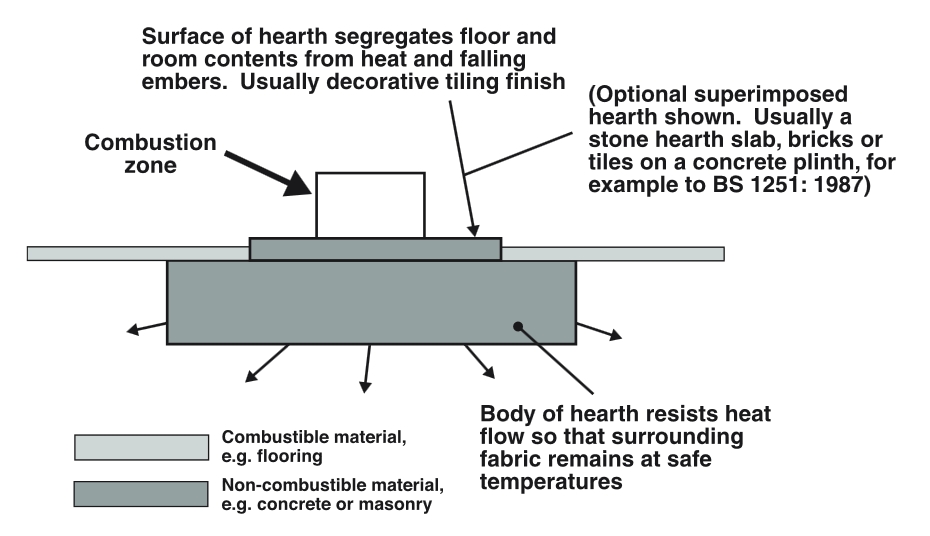Hearth definition
Approved document J, Combustion appliances and fuel storage systems defines a hearth as:
‘…a base intended to safely isolate a combustion appliance from people, combustible parts of the building fabric and soft furnishings. The exposed surface of the hearth provides a region around the appliance which can be kept clear of anything at risk of fire. The body of the hearth may be thin insulating board, a substantial thickness of material such as concrete or some intermediate provision dependent upon the weight and downward heat emission characteristics of the appliance(s) upon it.’
Hearths should be constructed of suitably robust materials and to appropriate dimensions such that, in normal use, they prevent combustion appliances setting fire to the building fabric and furnishings, and they limit the risk of people being accidentally burnt. They should be able to accommodate the weight of a combustion appliance and its chimney if the chimney is not independently supported.
NB Archaeometallurgy, Guidelines for Best Practice, published by Historic England in 2015, defines a hearth as: '...a structure used to obtain the temperatures necessary to work metal, the exact temperature depending on the metal being worked and on the process used. Hearths were used to melt non-ferrous alloys in crucibles, anneal copper alloys and heat iron before smithing. Hearths were usually made from clay and, because they were exposed to high temperatures, the clay was sometimes partially vitrified. The archaeological remains of hearths and furnaces are often similar.'
[edit] Related articles on Designing Buildings Wiki
Featured articles and news
Homes England creates largest housing-led site in the North
Successful, 34 hectare land acquisition with the residential allocation now completed.
Scottish apprenticeship training proposals
General support although better accountability and transparency is sought.
The history of building regulations
A story of belated action in response to crisis.
Moisture, fire safety and emerging trends in living walls
How wet is your wall?
Current policy explained and newly published consultation by the UK and Welsh Governments.
British architecture 1919–39. Book review.
Conservation of listed prefabs in Moseley.
Energy industry calls for urgent reform.
Heritage staff wellbeing at work survey.
A five minute introduction.
50th Golden anniversary ECA Edmundson apprentice award
Showcasing the very best electrotechnical and engineering services for half a century.
Welsh government consults on HRBs and reg changes
Seeking feedback on a new regulatory regime and a broad range of issues.
CIOB Client Guide (2nd edition) March 2025
Free download covering statutory dutyholder roles under the Building Safety Act and much more.
Minister quizzed, as responsibility transfers to MHCLG and BSR publishes new building control guidance.
UK environmental regulations reform 2025
Amid wider new approaches to ensure regulators and regulation support growth.
BSRIA Statutory Compliance Inspection Checklist
BG80/2025 now significantly updated to include requirements related to important changes in legislation.























